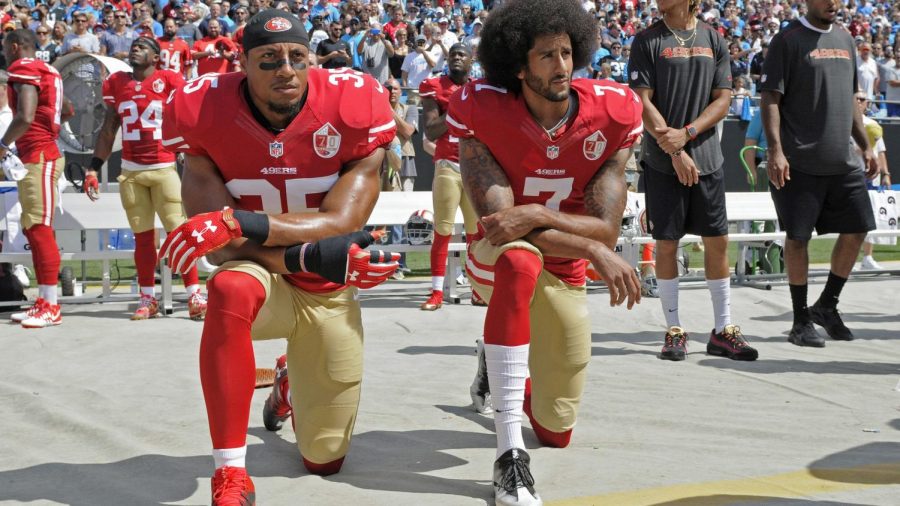How the NFL became a leading advocate for social justice

More stories from Thomas Cobb
The National Football League is the most popular professional sport in the USA. With assistance from the fans, the league leaders in conjunction with the players association have created a true beauty of entertainment. Approximately 100 million people tuned in to watch the 2020 Super Bowl, which is nearly one-third of our nation. The NFL exists as a culture that has swept society. However, one specific topic has plagued the league for past years: racial justice. Over the past 5 years, the NFL has battled this issue, switching back and forth on their stance more than once. The gradual emergence of racial inequality over time has caused the National Football League to shift their policy as a result of a significant push for equality by the players association.
On August 26, 2016, San Francisco 49er’s quarterback Colin Kaepernick shocked everybody as he elected to kneel for the traditional national anthem. After several more occurrences, the 49ers chose to release their starting quarterback. This was the outcome of the NFL reprimanding Kaepernick, stating that his actions were against league policy. As an increasing number of players began to grow upset at the league, protests began to break out. On September 25th, 2017, 10 teams chose to have everybody kneel for the national anthem, while the other 12 teams remained in their locker rooms. As these protests were arranged, the NFL felt that is was necessary to support the players on this matter.
After years of lukewarm support, they were put in a very intricate position in May of 2020, as a global movement broke out in attempts to mend current-day racial inequality. NFL commissioner Roger Goodell released a statement in which he apologized on behalf of the league for turning a blind eye on prior instances of racial inequality, as well as coming out in full support of the players within the movement. Through an offseason of struggle generated by COVID-19, the NFL stuck with its initial message. On Thursday, September 10th, the first NFL game of the season was played. As both teams sat out the national anthem, they joined together at midfield in a moment of unity. The words “end racism” and “it takes all of us” were displayed in both endzones, revealing the league’s efforts to spread awareness. Through trial and error, the NFL struggled with the consistency of their opinion as they gradually shifted to the other side of the spectrum.
Over time, NFL players have become significantly more active among racial movements and protests. As a result of this, a massive divide between NFL fans has surfaced. As minorities far and wide fight for justice, there is an influx of people that oppose these movements, as the NFL once did. Although a heavy majority of the players are united under their beliefs, their goal is far from being fulfilled. Barely 4 years ago, Colin Kaepernick kneeled for the national anthem; this was the first act of protest that took place under NFL supervision. Shortly after, this spiraled into a league-wide movement. Ever since the NFLPA (players association) spoke up against the league, the National Football League has made concerted efforts to combat racism and inequality among their league. From initially punishing protesters to eventually fully participating in racial inequality movements, the NFL has completely shifted their opinion as they ultimately decided to engage in fighting for racial justice.

Thomas Cobb is a junior at FHC in his first year on staff as a Sports Reporter. Thomas hopes to study journalism in college in order to fulfill his lifelong...

























































































